Resources
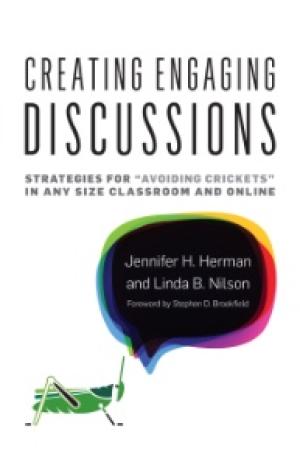
Click Here for Book Review If you have ever been apprehensive about initiating classroom discussion, fearing silences, the domination of a couple of speakers, superficial contributions, or off-topic remarks, this book provides strategies for creating a positive learning experience. Jennifer H. Herman and Linda B. Nilson demonstrate how to create the conditions to facilitate deep and meaningful learning as well as to assess the effectiveness of discussions. They identify, analyze, and solve common problems in both classroom and online discussions and in both small and large classes. They take a direct, practice-oriented approach that, in acknowledging common challenges, provides principles, guidance on design, examples of activities and techniques, and eight detailed case studies. These cases demonstrate successful approaches that faculty across disciplines and from a variety of institutions have adopted in their face-to-face, blended, or online courses at the undergraduate or graduate level. The case authors begin by describing the original pedagogical challenge they faced and explain how they addressed it and assessed the results of their innovation. They also offer practical recommendations to readers who may want to try their strategies. Intended for faculty, this book will be equally valuable for educational developers who can use this resource in their programs and private consultations. At the graduate level, this book can serve as a text or workshop resource in college teaching courses and teaching assistant development programs. The final chapter provides a set of resources and activities – including discussion questions on the case studies, writing prompts, and jigsaw formats – that are equally appropriate for individual study or for use in workshop environments. You’ll never again have to suffer such a profound silence that, as described by a contributor to the book, she could hear the crickets chirping outside. (From the Publisher)
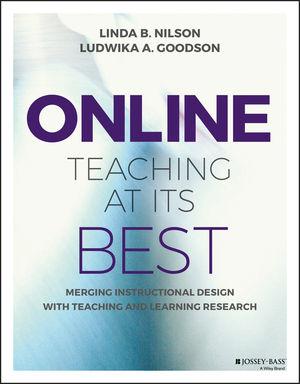
Online Teaching at Its Best: A Merger of Instructional Design with Teaching and Learning Research is the scholarly resource for online learning that faculty, instructional designers, and administrators have long been awaiting. Over 70 percent of degree-granting institutions offer online classes, and while technical resources abound, the courses often fall short of integrating the best practices in online pedagogy, even if they comply with online course design standards. Typically these standards omit the best practices in teaching and learning and the principles from cognitive science, leaving students struggling to keep the pace, understand the material, and fulfill their true potential as learners. This book fills the gap, providing evidence-based practices for online teaching, online course design, and online student motivation integrated with pedagogical and cognitive science to help you build the distance learning courses and programs your students deserve. As more and more students opt for distance learning, it's up to designers and instructors to rethink traditional methods and learn to work more effectively within the online learning environment, and up to administrators to provide the needed leadership. Online Teaching at Its Best provides practical, real-world advice grounded in educational science to help online instructors, instructional designers, and administrators deliver an exceptional learning experience. (From the Publisher)
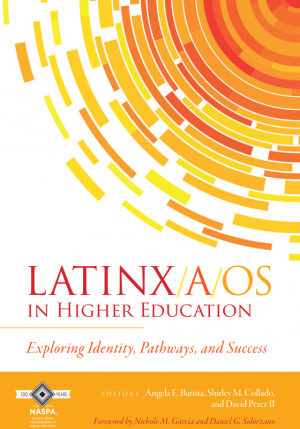
The Latinx/a/o population is the largest and fastest-growing ethnic group in the United States, yet higher education attainment for this community is among the lowest. Latinx/a/os in Higher Education: Exploring Identity, Pathways, and Success addresses topics relevant to the experience of Latinx/a/o students and professionals and illustrates key elements that should be considered in the development of varied pathways to their success.

Click Here for Book Review For nearly 2 decades, Looking Together at Student Work and The Power of Protocols have sustained educators in their professional learning. Protocols in the Classroom expands the scope of those books from teachers’ professional learning to include students' learning, providing teachers with the tools they need to use discussion protocols to support students in developing crucial skills and habits as readers, writers, critical thinkers, and active participants within the classroom community. This essential guide provides detailed descriptions of protocols for four critical purposes: -Entering into and engaging with texts of many different types; -Sharing perspectives on questions, issues, or topics; -Giving and receiving important feedback on works in progress; -Exploring one’s own unique learning style. For each protocol the authors provide a clear set of steps, tips for teachers and students in facilitating the protocol, and a story of a teacher using the protocol with students. The book is filled with resources for getting started using protocols with students, as well as for deepening the use of protocols over time. It also relates protocols to other strategies for supporting students’ learning, including Accountable Talk, Thinking Routines, and Socratic seminars. The authors describe how protocols contribute to a schoolwide culture of discussion, inquiry, and reflection. (From the Publisher)
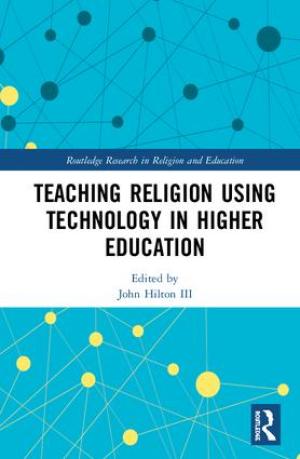
Click Here for Book Review This edited collection helps those teaching religion in higher education utilize technology to increase student learning both inside and outside of the classroom. Recent times have seen major technological shifts that have important implications for how religion is taught at a post-secondary level. Providing multiple perspectives on a range of topics—including social media use and interactive classroom learning —this book presents a series of original case studies and insights on how technology can be used in religion classes in higher education to improve student learning. (From the Publisher)
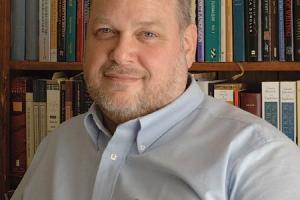
We can boil successful strategic planning around distance education down to three things. First, know how to create lots of ways to use the digital environment for effective teaching and learning. Second, know your potential students. Third, bring the two together: develop a set of scenarios in which to leverage certain forms of online teaching and learning to engage those potential students. Let’s break it down. The core skill to designing good modules week after week for an online or hybrid course is to find the sweet spot between learning outcomes, learning activities, and supporting technology. It would seem like that is three different skills, but it is actually one integrated set of decisions. You start by producing a clear set of learning outcomes (not goals, and not objectives, which always tend to be descriptions of course content). Then, you try to figure out a set of activities (assignments, if you will) that if the students do them will help them master the outcomes. These often progress from individual work to interactive dialogue in community. Then, you go looking for the technology that will support the learning activities that will help achieve the learning outcomes. It is circular. The magic happens when you find the right CMS functionality, tool, or plugin that not only helps the students do what they need to do to learn, but also supports you, the faculty member—especially in time management ways—keep up with the grading, assessing, and giving feedback that is all a necessary part of facilitating good learning. Together, these integrated pieces usher the students through a set of individual, small group, and corporate activities that help them achieve each module’s learning outcomes. A vibrant community of online teachers share best practices and begin to develop an array of these module scenarios (complete with outcomes, activities, and technology) that can be tweaked and modified for different content and different outcomes. This is the heart of an effective community of online teachers. The other piece of strategic planning is to know your students. This includes the usual information: where your students live, what denominations they serve, and all the other sorts of demographics we gather. But none of that is as important as being able to describe the type of life (or types of lives) that include being a part of your seminary. What are the barriers that may prevent participation in your learning community? Is it the commute? Is it the second or third commute in one week that moves the equation from possible to impossible? Is it the requirement to disrupt family, jobs, and support networks in order to move to your campus? Is it having to fly to your city two or three times a semester? A series of focus groups with a set of current students and another with prospective students could create a clearer understanding of what those barriers are. Then, a set of brainstorming sessions by your community of effective online teachers might be able to identify a new set of technology-enhanced tools and processes that could help you lower the barriers and engage your students’ lives more effectively in theological education. Strategic planning gets interesting when we can do just that: bring our newfound capabilities for creating diverse learning scenarios to bear on lowering barriers to participation in the life of your seminary—without lowering the quality of your education. Can we leverage a virtual learning community for deeper learning in the courses we already offer—essentially increasing the quality of our education? Can we penetrate our current region to a greater degree because more types of lives can take on participation in our learning community and succeed? Can we create new scenarios that transcend the boundaries that previously limited the distance or frequency a student would have to surmount in order to come to campus? The information age has dismantled a lot that is familiar about the way we have approached theological education. But, it could also be an avenue through which we revitalize, deepen, and extend our theological education to more people.

College students were far more uniform in age, race, and socio-economic background a few decades ago than they are now, yet colleges and universities have often failed to design programs of study that work for these students. Leading Academic Change outlines the steps to take toward change on behalf of the new majority students, the non-white, low-income, working, second language, or adult learners who often find themselves in very unfamiliar territory in college classrooms. These “first generation exclamation point” students (xiv) most often encounter ineffective and even counterproductive general education and distribution sequences, and many are transfer students from community colleges, whose curricula are at odds with those at 4-year institutions. This book proposes workable solutions to multiple missed connections. This book is less for classroom teachers than for administrators interested in meaningful structural change. Maimon relies primarily on data from years of innovation in Writing Across the Curriculum programs as well as on her own considerable administrative experiences. The central case study is Governors State University, which has successfully implemented high impact practices and a more integrated, student-centered curriculum with low administrative bloat. Drawing on the work of Judy B. Rosener, Maimon draws a clear distinction between traditional “transactional” leaders and “transformative” leaders (5). Transformative leadership brings everyone to the table and works collaboratively to achieve shared goals. Maimon aims at collaborative transformation with student success at the core. Maimon provides many concrete, multi-faceted suggestions here. In brief, the institutional transformations she supports rely on a close interaction of students and faculty, who are in this venture together. She insists on several key components to transforming institutions: a commitment to keeping funding closer to students than to administrative offices; close cooperation between student affairs personnel and classroom faculty; a willingness to take advantage of high tech while maintaining “high touch” with students; an ability to see students as people in development, who need feedback through assessing for strength, not deficit; and a willingness to allow students’ lives to enter the classroom and to inform – rather than be at odds with – the curriculum. Despite its emphasis on institutional change, this book does get down to the classroom level in several ways, particularly in emphasizing the importance of respecting students for who they are and what they know. That respect and recognition of prior knowledge can help teachers and academic leaders to scaffold a curriculum of knowledge and skills that makes sense for all concerned. Maimon also calls teachers to humility rather than judgment. She decries the endemic “Maimon Hierarchical Fallacy” which holds that some teachers in some disciplines are “smarter” than others based on how abstract their work appears to be or the level of the students they teach (57). This damages students as well as teachers and can starve introductory courses and students of the best teachers. This book is, above all, a call to give all students our very best, both in our classrooms and at our institutions. It is also a well-timed reminder that change is inevitable and that equity can be a means to achieving educational quality.
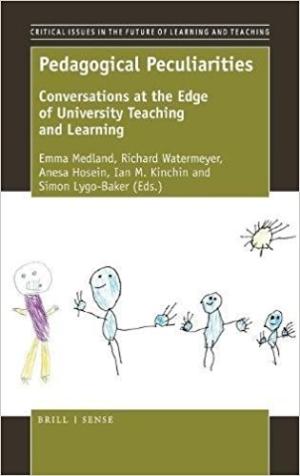
This edited volume (its authors primarily situated in England) offers a resource for those in higher education who face a rapidly changing educational landscape often marked by “increased marketization and bureaucracy” (ix). In looking at the peculiar distinctions of university pedagogy, this resource reconsiders the traditional academic tripartite roles of researcher, teacher, and administrator in light of growing challenges facing post-secondary educators today and especially in theological education and religious studies. These challenges include the increasing separation of these three academic roles from one another, the redefining of excellent teaching mostly in terms of assessment and evaluation, and finally, the reduction of teaching to a simple series of techniques and best practices. Pedagogical Peculiarities resists these trends through “deliberative dialogues” (xi) that reflectively peer into a wide swath of disciplines, university roles, and issues. In the first chapter, Stephen D. Brookfield raises two different kinds of peculiarities in university teaching. First, by teaching, educators simultaneously offer seemingly factual and neutral content amidst complex, and at times, competing internal opinions that stem from the multilayered structures of teaching. Thus, teaching is not so clean a process and is far more multifaceted than the passing on of content alone. A second peculiarity, “the contextuality of practice,” involves teaching plans that despite being mostly crafted in an educator’s solitude and internal space, experience a metamorphosis when they externally reach a student. Grand plans are adjusted and the deft teacher is left to alter plans “on the fly” (2). In the concluding chapter, “Building an Agenda for Academic Development on the Peculiarity of University Teaching,” Paul Ashwin reflects upon tensions that exist when thinking about university academic development. These tensions are between: (1) teaching as an individual and as a collective activity, (2) the local and the global in teaching, (3) complexity and simplification, (4) the practical and theoretical, (5) ideas of what it means to be an academic, (6) excellence and enhancement, and (7) the radical potential of university teaching and the tendency for conformity in university teaching (115-22). The opening and concluding chapters bookend three sections subdivided into three pedagogical identities: (1) Identity as it relates to teaching (chapters two and three); (2) Identity as it relates to the discipline (chapters four and five); and (3) Identity as it relates to the institution (chapters six and seven). The middle chapters probe Ashwin’s seven tensions through a variety of disciplines with hope of a better understanding of pedagogy and teaching. The book’s methodology, which includes dialogue, interview, case study, illustrations, and narrative, is a welcomed variation from resources written in prose. The cultural differences between a U.S.-based reviewer and a primarily U.K.-based text were apparent, but were easily clarified. Overall, this text raises important pedagogical issues for university deans, chairs, and academic development administrators. It also spurs conversations for current or aspiring academics who are rethinking their identity as teacher-scholars amidst shifting needs in higher education.
[su_heading]This information is for participants already invited to this program.[/su_heading] [row] [column lg="4" md="4" sm="12" xs="12" ] [su_spacer size="20"] [su_button url=" https://www.wabashcenter.wabash.edu/programs/workshops/travel-and-accommodations/" background="#86b53e" size="3" wide="yes" center="yes" radius="5" text_shadow="0px 0px 0px #FFF" desc="Flights, Lodging, Directions, etc..."]Info on Food, Travel and Accommodations[/su_button] [/column] [column lg="8" md="8" sm="12" xs="12" ] [/column] [/row] [row] [column lg="7" md="7" sm="12" xs="12" ] [text_only_widget] Ground Transportation About a week prior to your travel you will receive an email from Beth Reffett (reffettb@wabash.edu) with airport shuttle information. This email includes the cell phone number of your driver, where to meet, and fellow participants with arrival times. Please print off these instructions and carry them with you. [/text_only_widget] [/column] [column lg="5" md="5" sm="12" xs="12" ] [text_only_widget] Contact Information on Day of Travel Wabash Center: 800-655-7117 After Hours: as directed in the travel email Venue (Trippet Hall): 765-361-6490 [su_spacer size="20"] The Travel Authority (to change flights) 800-837-6568 Tami Brubaker tami.brubaker@altour.com Thommi Weliever thommi.weliever@altour.com [/text_only_widget] [/column] [/row]
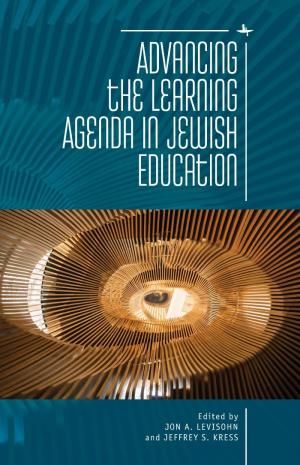
Jewish educational projects and programs are thriving, attracting philanthropic support for exciting and creative approaches in every sector and setting. But underneath that energy, we are not as clear as we ought to be about desired outcomes, the kinds of learning needed to achieve these, and how those kinds of learning actually occur. This volume is the first of its kind to bring together scholars from inside Jewish education and from the learning sciences. It offers a set of critical perspectives on learning, sometimes borrowing models from other domains (such as science) and sometimes examining specific domains within Jewish education (such as havruta learning or the learning of Jewish history). Collectively, these contributions help to advance a smarter, sharper conversation about Jewish learning that matters. (From the Publisher)
Wabash Center Staff Contact
Sarah Farmer, Ph.D
Associate Director
Wabash Center
farmers@wabash.edu